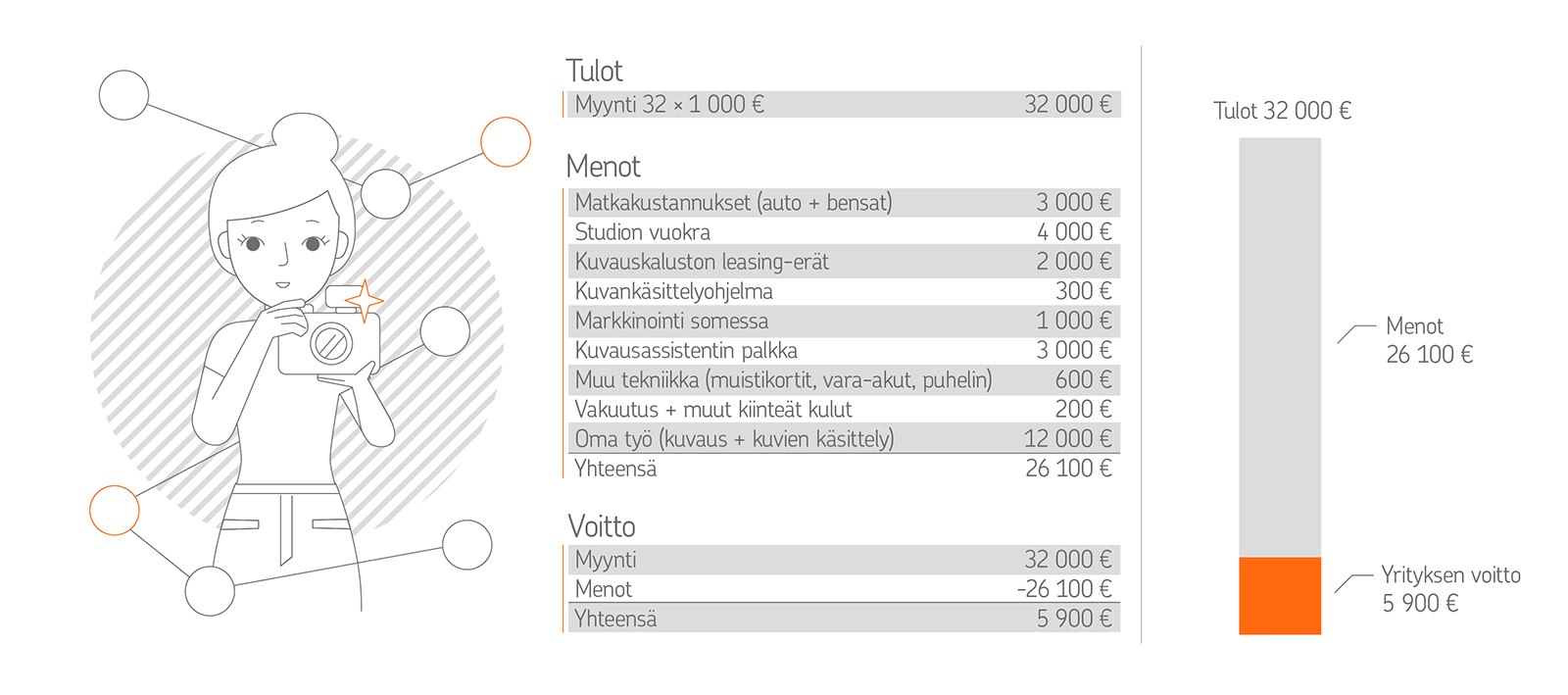What is a budget?
A budget is a key element of a company’s money management and systematic planning. Budgeting is a way of assessing where money will come from, where it will go and how much over a specific time-period, typically an accounting period or calendar year.
The budget is helpful for planning ahead and monitoring your company’s financial situation. In addition, budgeting helps your company to see what kind of costs are incurred due to the production of products and services and how many of them should be sold so that your business is profitable and you get the pay you want from entrepreneurship.
Budgeting should be based on the company’s business plan, which will allow for determining the company’s goals. A workable budget is usually made on a monthly basis, as yearly figures are not sufficient to guide operations. To download a budget, use our easy budget template.
Prepare a budget that suits your company
The guideline for a good budget is that it is prepared at a level and precision that suits the company. To find the proper level, it is a good idea to consider what income and expenses are important for the big picture and how the company can affect them.
The budget made based on the estimates of income and expenses is called a profit budget. What is included in the profit budget depends on the type and size of the company. The larger the company, the more details are typically added to the budget. It is most advisable for small entrepreneurs to include all areas in the same budget.
Example of a company’s budget
Vilma is a wedding photographer. She estimates that between May and August, she will perform two photo shoots for weddings per week. There are approximately 16 weeks in the summer season, which means that she would have a total of 32 weddings to cover. One photo shoot for a wedding costs 1,000 euros. Example of Vilma’s company budget:

Monitor the fulfilment of the budget regularly
A budget is useless if it is forgotten after being prepared. When you monitor how the forecast has been fulfilled, you can see whether your company has achieved its goals. After accounting is complete, the budget should be monitored on a weekly basis. At the same time, it also pays to update budget forecasts for upcoming months, if needed.
The cash flow statement enables you to monitor the sufficiency of funds and liquidity on a real time basis, and it is a useful tool for monitoring the fulfilment of the budget.
Additional information on operating budgets
In many cases, small entrepreneurs are content with only one budget. Bigger firms may also made operating budgets of which the most typical ones are as follows:
- Profit budget = A forecast of the company’s profit derived from an estimate of its expenses and income.
- Cash budget = This indicates the amount of funds the company has in the form of cash or in its corporate account or another quickly available format. These are prepared on the basis of the profit budget. These are also referred to as liquidity or financial budget.
- Sales budget = A sales target typically assigned for each month. Their sum total forms the sales target for the entire budget period.
- Marketing budget = Expenses incurred due to the company’s marketing operations.
- Fixed expense budget = Recurring expenses that do not change on a short-term basis and are not directly linked with the company’s profitable business. These include expenses incurred due to business premises, rent, wages and electricity.
- Variable expense budget = Expenses that change according to production and sales, such as those incurred due to materials. This is also referred to as a manufacturing or production budget.



